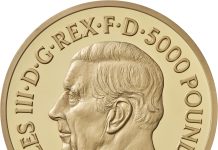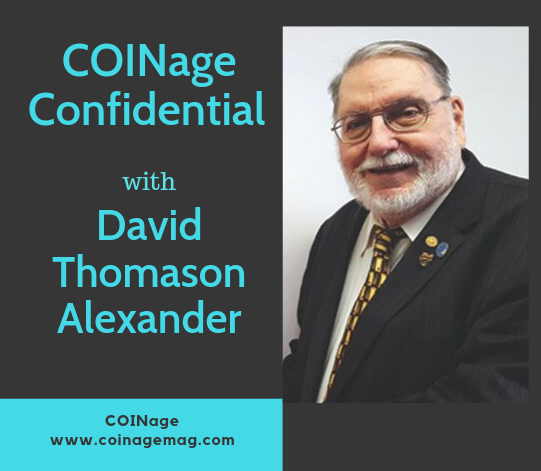
By David Thomason Alexander
December 2019 will mark my 70th year as a coin and medal collector. It occurs to me that my life in numismatics has spanned a world of change with which I have been associated and which I have followed from the inside. Just possibly, my experiences may provide clues to why things have gone as they have in the numismatic world around me and possibly even how what may develop tomorrow.
Wartime Cent Starts It All
My first real awareness of coins came in the summer of 1943, when I was 3, my brother John, 5. My family was living on the grounds of the Tanglewood Music Festival in Lenox, Massachusetts. One afternoon my father returned from his job with GE in Pittsfield and presented us with a handful of glittering silvery objects bearing a bearded bust and “ONE CENT.”
This was fantastic! Here was the familiar “Lincoln penny” but silver, eliciting my brother’s immediate judgement, “they look just like DIMES!” A 5-year-old had immediately identified one of the basic reasons for the immediate failure of the zinc and steel wartime cents. Fast-forward to 1948, Joe and Al’s Fish Market on Brooklyn’s, Kingston Ave. just off St John’s place. “Here, you kids can have these,” and across the counter came a number of Indian Head cents from some recess in the cash register. We were fascinated but didn’t keep them long.
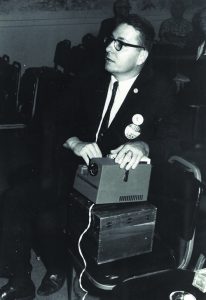
Moving to downtown Miami in 1952 brought us into contact with two major influences, first the new Miami Public Library with its whole shelves of circulating coin books and a reference room that received The Numismatist and Numismatic Scrapbook, donated by something called the Miami Coin Club. This group had been founded in 1948 by veterans of the New York Numismatic Club (NYNC). I’ve been active with the NYNC since 1990.
At the same time, we found our first coin dealer, a veteran of the 1930s whose Shoreland Arcade store was dominated by a massive safe adorned with gold-leaf identification “FREDERICK A. NEWMAN PHILATELIST – NUMISMATIST.” His 5- and 10-cent junk boxes stoked the flames and ultimately, we graduated to the 69-cent specials. Newman offered more costly “foreign coins,” crowns, and thalers at $2,00 up.
Coin Club Provides Early Influence
The Miami Coin Club was a huge influence, originally emphasizing speakers and exhibits, holding down commercialism. Here I met the late Otto Sghia, NYNC president in 1942 and in 1955 one of the founders of Florida United Numismatists (FUN).
My brother and I were charter members of FUN, dues $1. Miami members were active in founding FUN but were soon elbowed aside in the leadership. As the Miami club rotted into a crude flea market led by and for a coterie of third-rate dealers who obstructed speakers and sabotaged exhibits, we started taking the Greyhound bus to a new Fort Lauderdale Coin Club.
I spent the summers of 1956 and 1957 with relatives back in Brooklyn. I first visited the American Numismatic Society in July 1956, falling in love with the institution and its ancient display of Society of Medalists medals that dated back to the 1930s. I worked the next summer on Beekman Street in lower Manhattan until it was time to begin as a freshman at the University of Miami of a science talent scholarship. I found that I could do lunch on my 15-minute coffee break and devote lunch hour to searching Nassau Street stamp and coin dealers.
My brother and I were charter subscribers to Coin World in 1960. We had already watched the 1950-D nickel craze and the 1955-1957 proof set mania, both of which crashed in their turns. Market cycles were speeded up by weekly coin newspapers. Our colleague “Foxy” Steinberg offered sage advice in the annual “Crystal Ball” feature of Numismatic Scrapbook: “Stop worrying about how many nickels the Mint is going to strike! Just enjoy your coins and good health!”
I graduated with a Bachelor of Science degree in 1961, promptly received a graduate fellowship in history after quick-cobbling an undergraduate equivalency in two summer sessions. Receiving my MA, I gained a Ford Foundation Fellowship to the African Studies Center at the University of California at Los Angeles (UCLA).
Connecting With Coastal Clubs
UCLA’s greatest value to me was to facilitate my immersion in the then-flourishing numismatic world of Southern California, which included Cal State, NASC, and dozens of local and specialty clubs, most notably the Society for International Numismatics (SIN) which was limited exclusively to “foreign” coins and included indomitable in-depth collectors and researchers. Led by Max Wedertz, James L. Betton (who called himself “III”), Lewis J. Upton, and E. Carolyn Nestrick, SIN published a cataract of mimeographed articles and studies and drew on members’ collections to create elaborate competitive exhibits.
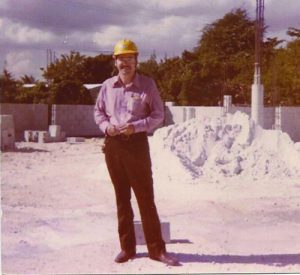
The society’s membership button was white with a red devil and pitchfork under “SIN.” One fine day, a group of us headed for a convention at the downtown Statler-Hilton and got off the elevator on the wrong floor, red devil buttons and all, into the middle of a meeting of Episcopal clergy of the Diocese of Southern California. A shocked silence dissolved when an immensely dignified elderly cleric in knee breeches approached to ask, “Are you here for equal time?”
I abandoned graduate studies and returned to Miami to devote 11 years to directing the Historical Museum of Southern Florida, located in a bayside 1925 Florida Boom house on a dead-end street in a deteriorating neighborhood one street width from the three-mile-wide salt water of Biscayne Bay.
We soon had five storms flooding the building up to five feet. Our governing board offered no leadership and and was voted out in 1966, after which we pressed ahead to build and occupy a new building provided by Dade County.
We mounted a single numismatic exhibit in the old building, a display of underwater artifacts and coins from the collection of Ed Link, inventor of the Link Trainer for training airplane pilots and a self-taught marine archaeologist. More than 5,000 visitors jammed the insecure old building, in which my brother and I mounted guard night and day.
Entering a New Career Field
Our new museum opened in mid-1972 next to the wildly successful Museum of Science and attracted more than 300,000 visitors the first year. Our museum was now worth having, and within a year and a half I was ousted from my position without a kiss in the morning…
The first gasoline shortage was now raging and museums everywhere were in contraction. After mailing out many resumes and interviewing at the Old Corner House in my old home town of Stockbridge, I bought several missing numbers of Amos Press’ monthly magazine, World Coins. Here was an exciting article, “The people who bring you World Coins!” I had a sudden thought: “What do you know! People do this!”
I immediately wrote to publisher J. Oliver Amos and flew north to be interviewed by him and Editor Margo Russell for the post of staff writer at the old Coin World (CW) offices on the Court Square of downtown Sidney, Ohio. After three day of writing, I received a positive offer and returned to Miami, packed up a U-Haul truck with clothing, 25 cartons of books and my Labrador Retriever Wendy, turned the key in the ignition and left Florida behind.
Settling in, I discovered that Sidney and Selby County were distinctly mid-western and rural. Editor Russell and staff were preparing their own westward move to the soybean fields west of town to the New Building where I would remain for the next 11 years, writing hundreds of articles for CW and many for World Coins, now edited by Courtney L. Coffing who had just replaced Russell Rulau, whose precipitate departure for Krause Publications in Iola, Wisconsin, created the vacancy I was now filling.
Coin World was at its peak with 120-page issues. Hard lessons had to be immediately learned: a newspaper is not a democracy, and the editor’s power is absolute. The editorial “party line” is not to be questioned; quality is sometimes secondary to simple page-filling volume of volume; some outside contributors are to be encouraged even if we have to clean up their copy.
Behind the Scenes of the Hobby
The United States Mint and the Franklin Mint could do no wrong, and the most
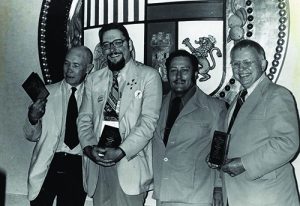
important task was to deify and report on the most trivial activities of Mint Directors Mary Brooks and Eva Adams, even though much of the readership regarded them as enemies. Some staff writers were well-regarded in the wider hobby, which was good for the paper but triggered anxiety in the editor.
Some areas were sensitive, notably Judaic numismatics where some early errors had aroused hostility. As a Brooklyn native and longtime Floridian, I had extensive experience in that area, and my late first wife had been raised in the Jewish faith. I represented CW on two Israel study tours conducted by the then-booming American Israel Numismatic Association (AINA).
I attended coin shows and conventions all over the U.S. and joined Courtney Coffing on a successful 11-country European tour. In Ireland I bought two silver Claddagh rings for my coming engagement to Pat Marie LaBranche of Dayton, Ohio. We were married on December 3, 1977, and had our honeymoon at the New York International Numismatic Convention(!). I was now a Life Member of ANA and the Numismatic Literary Guild.
Over the years I received many major awards, starting with Best Writer for SIN in 1963. I received many plaques from the Numismatic Literary Guild (NLG), which I directed 1982-1990, notably the Clemy Award in 1987. The rambunctious Society of Bearded Numismatists (SOBs) declared me Greatest SOB of the Year for 1980. ANA presented me the Glenn B. Smedley Award and Medal of Merit, followed by Numismatist of the Year for 2013.
Earned Accolades
In 2012-2013 I received the Burnett Anderson Award from ANS, ANA, and NLG. My book, American Art Medals, 1909-1995, received the Token and Medal Society’s Mishler Award for Excellence in Numismatic Cataloging and the Robert Friedberg Literary Award of the Professional Numismatists Guild (PNG).
During 1974 I was made executive editor of Numismatic Scrapbook, purchased by Amos in 1968. Though denied the hours needed to revive Scrapbook, I managed to stabilize the publication and circulation actually showed increase by January 1977.
During 1977 all changed at Amos Press. Three days before the Amos Press Centennial, I was called to the front office and informed that both Scrapbook and the vastly more robust World Coins were being cancelled effective today. This was the end of job security at Amos Press,
I left CW in early 1981, entering the world of commercial numismatics as an auction cataloger for five major firms up to 2013. In recounting my experiences, it is not my intent to present scandalous “inside stuff” but to describe my role in the auction world then and now and to highlight the role of the numismatic cataloger.
Joining the World of Coin Auctions
My brother and I began collecting, not with Lincoln cents from circulation, but with “foreign” coins also circulating in Miami. By the mid-1950s, we had begun buying new issues.
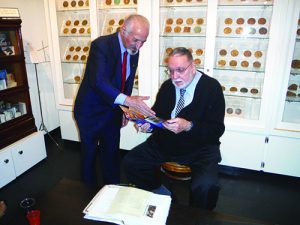
I first became aware of auction catalogs through a 1956 Hans M.F. Schulman sale, notable for erroneous descriptions and self-serving inaccuracies, such as promoting Adolf Hitler medals to status of pattern coins. I also examined catalogs of Henry Christensen of Hoboken, New Jersey, and midwestern dealer Jess Peters.
My first auction bids involved group lots of 1848 French patterns and modern Paris Mint medals cataloged by the late Lieut. Commander James C. Risk USN Ret. of Stack’s subsidiary Coin Galleries, a world-renowned expert on Orders and decorations.
By 1981 I was deep in medal collecting and had discovered a new firm in Danbury, Connecticut, called Johnson & Jensen (J&J), headed by Coin World’s first editor of long ago, D. Wayne Johnson. This partnership had pioneered catalogs on newsprint, handling medals of comparatively low value with seeming success. Orderly, replicable cataloging was the key to opening up the long-stagnant medal field, and J&J had apparently achieved this.
Sale after sale was conducted, but the public could not know that profit margins were necessarily low and that this seemingly solid firm was actually a hollow shell lacking adequate operating capital.
CW then sent me to Danbury to cover the First Strike ceremony of Edward Fraughton’s Ronald Reagan Presidential Inaugural Medal by Medallic Art Company. While there, I received a job offer to become director of publications for J&J. I resigned from Amos Press, and in due course my family moved to Danbury.
Gaining Valuable Lessons Through Cataloging
I would catalog some 14 sales for J&J, learning a vast amount about U.S. and world medals, quality of description, and financial difficulties caused by paychecks returned from the bank stamped “NSF.” It was soon apparent that this was a blind alley. Then arrived an urgent invitation from Kagin’s of Des Moines, Iowa, a well-established firm that desperately needed catalogers to produce the 1983 San Diego ANA convention sale.
Closely identified with numismatist A.M. “Art” Kagin since 1933, the firm was one of 13 now under the control of his son, Donald H. Kagin, holder of the first Ph.D. degree in numismatics. The firms included a network of numismatic investment sales through financial planners throughout the U.S. that ultimately led to a decade of legal struggles with New York state attorney Lefty Lefkowitz.
All that lay in the future as I set to work on April 1, tackling a staggering mass of coins received for ANA that had to be readied for cataloging. Our Des Moines staff now began a 15-week interlude of even-day weeks, each day starting at 6 a.m. and ending around 1 a.m. the next day.
Don Kagin’s recent in-depth catalog of Western Pioneer gold attracted number of rarities and I had entire populations of some types on my desk from time to time, along with all kinds or U.S. coins, ancient, and world offerings. Regular catalogers included Mary Sauvain and Dr. George Fuld, with established staffers such as the veteran Philip Joseph. Crowning our efforts was an artistic cover presenting “Lady Liberty,” created by acclaimed artist Peter Max.
From what we could glean, the ANA sale was a success, but underlying financial gangrene soon bubbled up and staff members began to be liquidated in December. In February my turn came, and the remainder of staffers were fired by conference call months later.
Changing Landscapes
I now founded my own firm, Alexander Numismatic Services, to perform
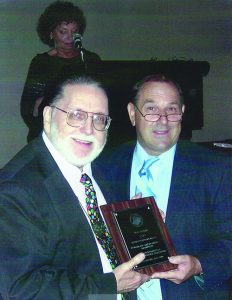
appraisal, independent cataloging, writing, and research drawing on my extensive library. Before I could fully engage, I began receiving insistent calls from Martin Haber of Numismatic Investments of Florida (NIOF). Haber and his firm, once described as an affiliate of New England Rare Coin Galleries, were highly regarded.
Marty looked to the four-firm Apostrophe Sales that involved Stack’s, Superior, RARCOA, and Paramount, each of which pledged to provide 500 lots of highest quality U.S. coins each year for a single catalog. NIOF dealt in “wonder coins,” and Haber reasoned that he could probably stage sales of 500 rarities successfully.
He would not take “no” for an answer, and I returned to Miami. I tried to show that no new firm could reasonably expect to barge in a skim off the most prestigious show auctions, but Marty demanded the 1986 FUN convention sale, which was solidly in the pocket of Mid-American of Lexington, Kentucky. There it would stay.
The first NIOF sale was at the Michigan State Dearborn show and was a success; the second for the Texas Numismatic Association was a total disaster.
NIOF abandoned the auction field forthwith. I continued my own firm and after the 1990 FUN Tampa convention, I received an unexpected call from Lawrence R. “Larry” Stack inviting me to New York for an interview. My family now included our infant daughter, Christina, but Miami was no longer the city I had known thanks to the unexpected death of my brother, vast population growth, and the disappearance of old friends and landmarks.
New Opportunity Presented
The Stack’s offer, combined with knowledge of their decades of leadership in the numismatic world, made this “the offer that could not be refused.” I would remain with the firm for 22 years, always fascinated by their longevity in an otherwise mercurial and ever-sifting world. I even enjoyed my daily rail commute, and our new home in suburban Mahopac kept its great appeal.
Principals in 1990 were Norman Stack, his cousin Harvey, and his son Larry. All were commanding personalities, and the firm had perfected a mechanism of introducing collectors to the world of numismatics, building collections, and ultimately selling these holdings when the time came. In its decades of success, Stack’s had its share of rivals and forthright enemies but was seldom deterred by opposition.
Stack’s as I knew it ceased to exist in 2011 with a merger with American Numismatic Rarities (ANR) of Wolfeboro, New Hampshire, the newest of the companies created by veteran numismatist and author Q. David Bowers. Ownership soon passed to Spectrum of Irvine, California, and these latest “new people” soon finished off the remaining Wolfeboro staff and closed in on New York. I worked a few weeks in Irvine when a company email flashed across the computer screen, “Great News!!! The Stack’s have rejoined the company!!!”
Then one fine day, the long-expected happened via long-distance telephone in the former executive office. End of 22 years, th-th-that’s all, folks!
My last assignment before finally retiring to my new condo in Putnam County, New York, was a seven-month stint with Heritage Auctions. Here was a radically different environment that ended on a final but friendly note. My way of approaching auctions, customers, and cataloging was simply different.
New Ventures, Same Passion
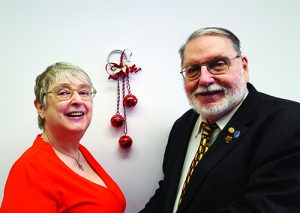
I am now free to continue my Coin World column “The Research Desk,” now in its 28th year. The ANS has published my American Art Medals 1909-1995, Circle of Friends of the Medallion and Society of Medalists, while the innovative Newman Numismatic Portal has just posted my 298-page Medals of the Hall of Fame for Great Americans at New York University.
The great questions of numismatics remain in 2019: can coin clubs and shows regain their health? Is investment compatible with true numismatics? Of course, it is! The subtle joy of increasing vale is always a tonic. Clubs could revive along with the social impulse that must underlie most human activity,
Relying solely on the internet does not strengthen social skills or provide meaningful human interaction. Greg Rohan once told an NLG Symposium that the computer has made it possible to collect while living by yourself on Golden Pond! It may be possible but is this really desirable?



